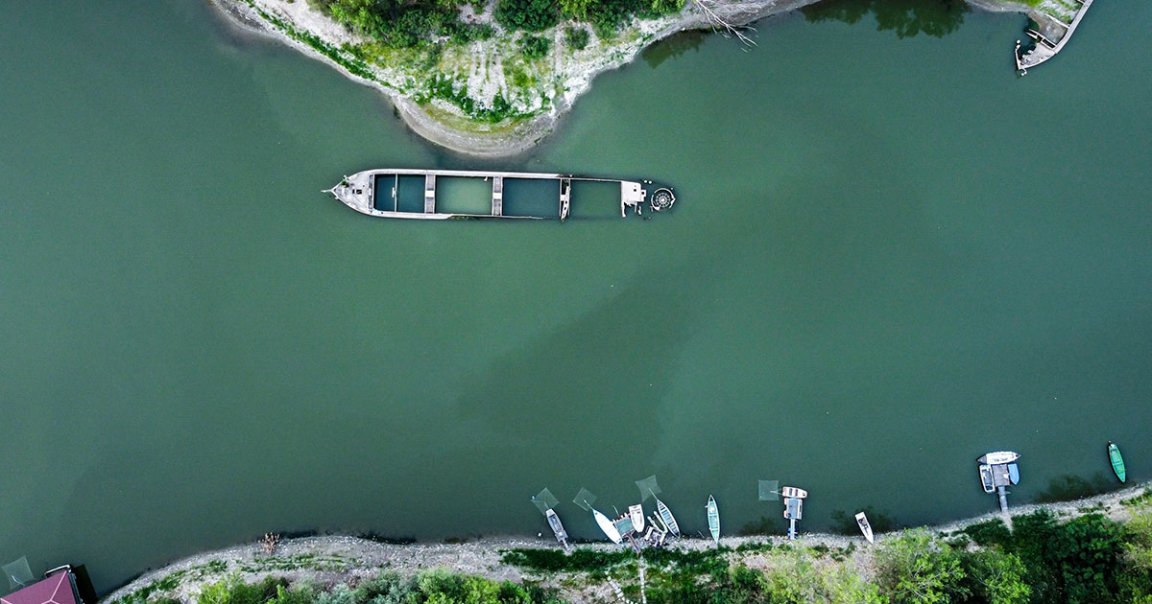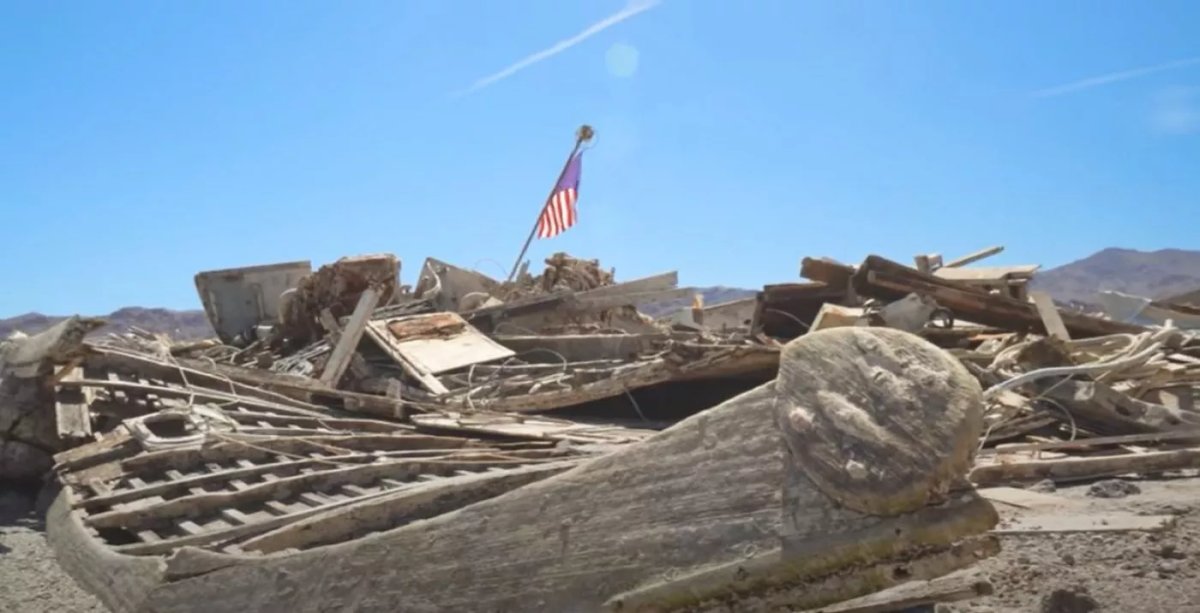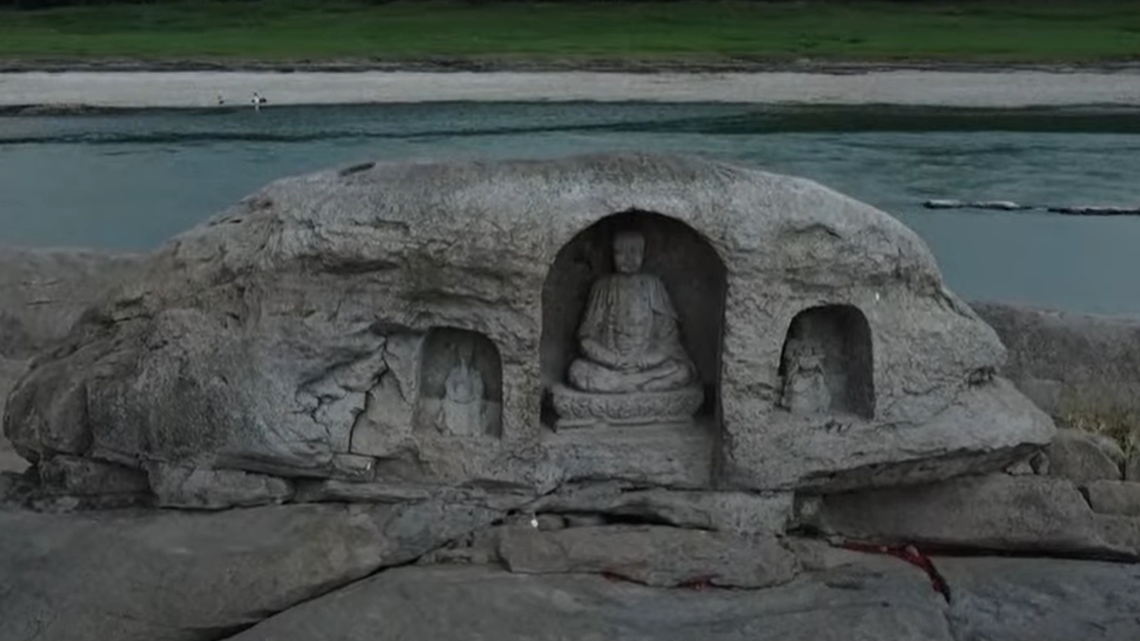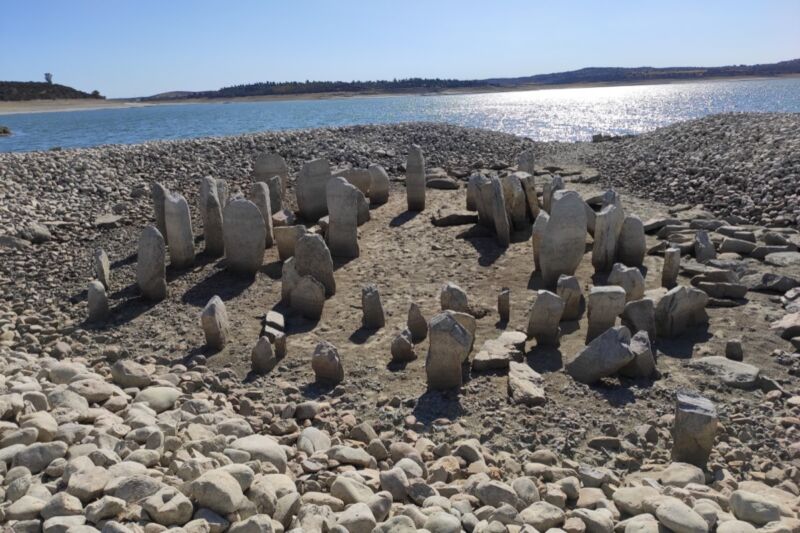
Climate’s A-Changin’
There’s little question at this point — a preponderance of evidence suggests that the Earth’s climate is changing rapidly.
Across the globe, power grids are struggling to keep up with heat waves and entire countries are battling deadly flooding and energy crises — and that’s in addition to disasters exacerbated by supply chain shortages.
As water levels dip dangerously low, river and lake beds are revealing long-forgotten and hidden objects the rest of the world was never meant to see. Climate change sucks, but the secrets it uncovers are morbidly fascinating, so we’ve collected the wildest 13 mysterious the world’s dried-up, parched waterways have unearthed.
13. Ancient Tree Stumps
Last week, Dutch-language news outlet Nederlandse Omroep Stichting reported that persistent drought had uncovered tree stumps from a pine forest that grew after the last Ice Age.
The stumps were found in the northern province of Friesland, part of the Netherlands, and are estimated to be between 10,000 and 15,000 years old.
12. A Haunting Ship Wreck

In July, Newsweek reported that an eerie shipwreck from an unknown date was found just about 10 feet from the shoreline of Lake Mead — located in Nevada and Arizona — shoreline as water levels hit record lows.
The wooden wreck still had utensils, a telephone, plaques and a bottle of nail polish on board.
11. Nazi War Ships
As Europe’s Danube River hits historically low water levels, more than 20 downed Nazi vessels have been discovered in Serbia, CNN reported.
Germany scuttled the ships in 1944 to avoid their falling into enemy hands during a retreat, but they’re still laden with metric tons of dangerous ammunition and explosives.
10. An Entire Spanish Village
In northwest Spain, levels at the Limia River are so low an entire forgotten Spanish village was unearthed last week.
The BBC shared an image of what the Roman camp, called Aquis Querquennis, looked like on the banks of the Limia River before it was covered by water.
9. Ancient Buddhist Statues

China hasn’t escaped increasingly serious drought, and the Yangtze River is also in trouble.
This week, CNN reported that the river has dried up so badly that it revealed a small stone island — complete with three statues of Buddha thought to be at least 600 years old.
8. A WWII-Era Bomb
In Italy, the Po River has gotten so low that it revealed an unexploded bomb from the second World War.
At the beginning of August, CNN reported that thousands of locals were evacuated while officials removed the bomb’s fuse and cleaned the area.
7. Spain’s Stonehenge

For the second time since 2019, an ancient stone formation in Spain has been made visible by the historic drought. Called the Dolmen of Guadalperal, the site has about 150 granite stones in a circular pattern.
Yesterday, Ars Technica reported that other artifacts have been found, and that the site was most likely built between 2000 and 3000 BCE.
6. Another Village, But Welsh
Remnants of a Welsh village called Llanwddyn haven’t been visible since the 1970s, but CNN reported earlier in August that the entire town can now be seen on the dry banks of the Lake Vyrnwy reservoir.
The town was flooded in the 1800s during a construction project.
5. Ancient Roman Infrastructure
A drought in Italy revealed the ruins of an ancient bridge over the River Tiber that was reportedly built by Roman emperor Nero around 50 AD.
Although smaller portions of the ruins have been visible in previous years, Reuters reported in June that the bridge is the most visible it’s ever been.
4. Creepy “Hunger” Stones

As bodies of water have dried up in previous drought conditions, Europeans throughout the centuries marked stones with dates, phrases and warnings. In periods when rainfall increases, these “hunger stones” aren’t visible, making their appearance creepy.
“When you see me, weep,” is inscribed on the most famous hunger stone, located in the Czech Republic according to a Big Think report last week.
3. An Entire Ancient Irish Island
In Ireland, drought revealed a manmade island called a crannog near Lough Neagh. The New York Post reported in July the medieval dwelling was built in a swamp, and that it would’ve been fit for any local royalty of the day.
2. Dinosaur Tracks

In Texas, 113-million-year-old dinosaur tracks were uncovered in Dinosaur Valley State Park, CNN reported yesterday. The tracks are normally covered by a local river.
A park spokesperson told the outlet the tracks most likely belonged to a dinosaur called Acrocanthosaurus, which weighed nearly seven tons.
1. A Lot of Dead Bodies
The aforementioned Lake Mead has been giving up its dead as its banks grew dryer. While some bodies are thought to belong to drowning victims, others are clearly from past murders — like remains found inside a barrel.
And this week, Newsweek reported that officials estimate there are hundreds of bodies still buried or hidden in Lake Mead, so we may be hearing about many more.
More to Come
Whether you find these developments cool or creepy, they all share something in common — droughts linked to climate change.
As much as we’d like to think dead bodies will stop popping up, it’s likely we’re just getting started.
More on deadly environmental conditions: At Least 900 Dead, 50K Homeless in Pakistan After Summer Floods